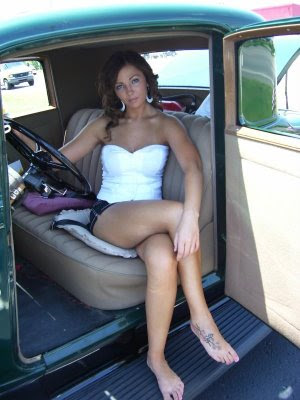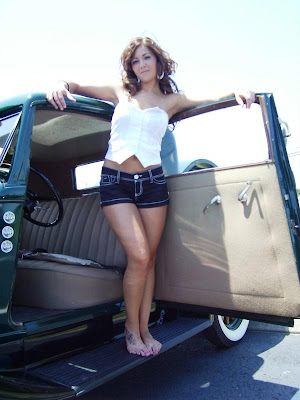 I have always had an interest in science. I am an admitted nerd. I have also been fortunate in having met many individuals along the way who nurtured my interest in science. Such a man was Clarence E. Johnson. And he was among the most unlikely.
I have always had an interest in science. I am an admitted nerd. I have also been fortunate in having met many individuals along the way who nurtured my interest in science. Such a man was Clarence E. Johnson. And he was among the most unlikely.
Mr. Johnson was a mailman. He lived in a tiny apartment over the bus station at 102 State Street in my home town of Schenectady, New York. He was a lifelong bachelor. And he just happened to have a lifelong passion for the science of astronomy. That passion led to an encyclopedic knowledge of the subject. He could rattle off the scientific names of hundreds of heavenly objects routinely -- "Bobby, that's NGC 205, more commonly known as the dwarf of Andromeda. It's a satellite galaxy of M31, the Great Andromeda Nebula..."
My first recollection of Mr. Johnson was when he was delivering mail to our home at 901 Union Street (now 849 Union Street, since the city for some reason renumbered all the houses in that neighborhood). One day, he mentioned to my father that he had heard that "Bobby had a real interest in science." My father confirmed that fact. Mr. Johnson went on to say that he was the President of the Schenectady Astronomy Club. The club was going to conduct free classes in telescope making at the Schenectady Museum (at that time on Steuben Street) and that he would be happy to have me participate and build a telescope if my parents would agree.
My parents thought I would benefit from participating in the Astronomy Club's activities, and so began my adventure of grinding and polishing a 4-1/4" Newtonian reflecting telescope. And every week, I rode to the museum in Mr. Johnson's ancient and rusty Plymouth. I was the youngest person in the class, by far. I was surrounded by engineers from the General Electric Company, headquarted in Schenectady, and hobbyists from many other walks of life. Clarence Johnson was one of the instructors, since he had built dozens of telescopes.
I also was invited to join in the "Star Parties" that the astronomy club held on clear weekends. The club had acquired some land on a high hilltop in the so-called Glenville Hills, not far from Schenectady. We would assemble there late in the evening, set up our telescopes, and observe whatever the objects of interest might be for a given night -- It might be lunar observing, or a specific planet that was observable, or some deep-space object.
Mr. Johnson's passion was the so-called variable stars. These are stars whose brightness varies over time, usually on some predictable schedule. He told me that his interest in astronomy had been born when he saw Halley's Comet in 1910. Although he had never attended a university, he had become an internationally recognized expert in the science of variable stars.
He also had a passion for teaching. He was the editor of a newspaper called The Junior Astronomer, published by the international Astronomical League. This newspaper was published ten times a year, to coordinate with the school year, and was provided to schools as well as individual subscribers.
In the early 1950's, the astronomy club embarked on a construction project to build a permanent observatory at the Glenville site. Mr. Johnson recruited me to help and I spent many Saturdays with him mixing concrete in a metal trough and pouring the foundation for a telescope mount as well as the footings for the walls. We carried a lot of jugs of water each week, since there was no water available at the site. We constructed the building with a sliding roof that was supported on steel rails. The roof would slide off onto a section of rails that was supported on posts. This exposed the telescope to the heavens. My recollection is that we had an 8" Newtonian reflector, although it may have been larger than that. The observatory looked like this:

About the time the observatory was completed, I left for college and gradually lost touch with Mr. Johnson. I do recall being told my my parents that he had passed away a few years later. I don't know what ultimately happened to the observatory and it's instrument.
I'm certainly grateful that our paths crossed, even for a few brief years.
Postscript: I sent an email to Alan French, who is an officer in the Albany Area Amateur Astronomers Inc. This group absorbed the remnants of the Schenectady Astronomy Club many years ago. I asked Mr. French if he knew whatever became of the old observatory. I received a very informative response which I share here:
Bob, Your e-mail was a very pleasant surprise this morning. I've pieced together much of the story over the years, but it was nice to read a report from someone who knew Clarence Johnson and helped with the observatory.
I'd have to look up the dates, but the Albany Amateur Astronomers learned about Johnson Observatory in the 1970s. The Schenectady Astronomy Club had been inactive for some years, so we visited the site.
The field was overgrown, with waist high brush, and the building was in very sad shape. By then the site was in Sanders Preserve, a Glenville Town Park. The Albany Amateur Astronomers got permission from the Town Board to restore the observatory.
We cleared the field and soon had grass take it over. We put a new roof on the building, put in a concrete floor (lugging water from a spring), fixed up the rails and installed a club member's 10" f/5 Newtonian.
There was a 12" DeVany Cassegrain there, but it was it sad shape and didn't work well. I don't think the optics had even been properly finished (a recollection of another former Schenectady Astronomy Club member was to that effect).
We held public star parties there for many years. The observatory eventually got modified into a club house and workshop, and a new domed observatory was built to house a 12" Tinsley reflector. One summer the observatory was robbed and virtually everything was stolen. We also started using a new, dark sky site in Esperance, and interest in the Sanders site diminished. The encroaching tree line, which we had little control over as it was a nature preserve, also became a problem. We stopped holding star parties there several years ago. The old building was demolished some years ago, and the new dome was burned down last year. The dome was made of masonite and plywood, and the years were not kind to it.
I'll share your link with other club members. I am sure many of them know little about the old observatory.Clear skies, Alan











